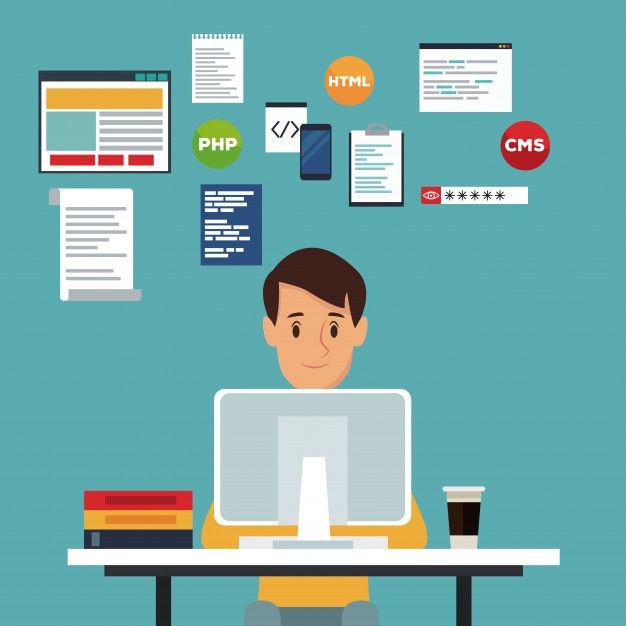Why App Developers Need to Adapt CIAM Today More Than Ever

App developers are increasingly turning to customer identity and access management (CIAM) solutions as B2C companies look to offer an elevated user experience across all touch-points. ALM
As B2C companies look to offer an elevated user experience across all touchpoints, app developers are increasingly turning to customer identity and access management (CIAM) solutions that can help protect customer data and enhance the customer experience.
Customers have become increasingly receptive to new technologies and are using a wide array of digital solutions such as smartphones, wearable devices, virtual reality (VR), and Internet of Things-enabled systems in their daily lives. These digital solutions have made the execution of tasks easier and faster, bringing about a major change in customers’ behavior – i.e. the need for instant gratification of their demands.
In an attempt to attract customers and please them, app developers, who are already operating in a highly competitive market, are toiling hard to rollout better products, for which they are constantly scouting for more customer data to get a deeper insight into their personality, preferences, and requirements.
With more customer data comes greater responsibility to protect it, especially in today’s era, where on the one hand there is a significant growth in the number of data breaches and cyberattacks, while on the other hand, more stringent data protection rules such as EU’s General Data Protection Regulation (GDPR), the California Consumer Privacy Act and Brazil’s upcoming Lei Geral de Protecao de Dados are implemented to safeguard customer data. It is imperative for developers to comply with these rules and ensure high customer data integrity and safety.
Security Challenges that App Developers Face
According to a report by cyber threat intelligence company Risk Based Security, there was 284% year-over-year growth in the total number of records exposed in 2019, with more than 15.1 billion records compromised.
Data security cannot be put on the back burner anymore, with organizations now adopting the DevSecOps model to build in security within new applications right from the first stage of their development.
In such a scenario, working with identity access management, particularly CIAM, while developing customer-facing solutions is a great idea, more so when developers are facing the challenges as mentioned below:
- Customer Data Storage- Unsecured applications without data encryption or secure cloud data storage provisions can often serve as a free pass for the hackers to barge into the user device and access unprotected data on the device.
- Server-side Security Vulnerabilities- Even if app developers use good security features for their apps, security vulnerability of the server hosting the app could serve as a potential gateway for cyberattacks that could lead to loss of personal and sensitive customer information.
- Poor Session Management- Most users use their smartphones to access apps on-the-go, juggling between different activities and thus prolonging the sessions and at times even leaving the sessions without logging out. A logged-in, unattended session could especially be harmful if the device is stolen or lost. Hence, developers need to carefully implement session management features for the time-to-time deletion of cached information and logout from accounts.
- Poor Password Management- It is common for developers to prioritize functionality over security, owing to which many developers fail to adequately hash the passwords of their users and protect the password database properly.
How Does CIAM Help App Developers?
A good, scalable CIAM solution offers all the features necessary for secure and efficient management of user identity and access.
- User Registration: CIAM solutions offer different user identity validation and proofing options to present the users with more flexible account setup choices, ranging from social registration to self-service registration and delegated administration, for faster and hassle-free registration.
- Better Understand Authentication: CIAM allows app developers to offer different user authentication mechanisms like adaptive authentication, multi-factor authentication, and social login that reinforce the identity validation process.
- Better Manage APIs: APIs can facilitate a solution’s integration with third-party applications for carrying out security integration, marketing analytics, provisioning/de-provisioning, identity analytics, consent auditing and reporting for better functioning of the app. CIAM helps in improving the security quotient of these shareable, open-access APIs for better overall data protection.
- Compliance with Data Privacy Regulations: Developers can add authorization policies through CIAM to minimize information sharing, especially personally identifiable information, with collaborating third-party apps and services in order to comply with the data privacy regulations and provide customers with control and insight over the use of their data.
- Integration with External Identity Provider: The Single Sign-On (SSO) authentication scheme has gained popularity with its ability to provide users with easy access to multiple websites and applications using a single ID and password. Naturally, all these disparate apps and sites will have different ways to integrate and the developer will have to create a connection adapter based on OAuth 2.0, SAML or OpenID Connect standards as per the requirement.
- Progressive Profiling: CIAM allows organizations to populate the user profile with attributes added as a result of the user’s continual interactions with the app/website. By prompting them to feed in more personal information over a period of time, the companies can build richer user profiles that can be utilized later to offer personalized services and recommendations.
- Tiered Delegation: While most of the services like online banking, taxi booking apps and mobile wallets allow for the creation of user account that can be accessed by just a single user, there is a rise in the services and apps allowing multiple user access - e.g., music and video streaming services. CIAM helps in offering tiered access authority in such scenarios by defining access limits for different categories of users within the group.
- Security for Data and Accounts: CIAM solutions entailing authentication mechanisms such as MFA and adaptive authentication help in verifying the identity of users, ensuring secure logins, and reassuring customers of the safety protocols that are followed by the company to safeguard their data and deter illicit intrusions.
Conclusion
Managing digital identities of users using a variety of digital solutions requires advanced CIAM solutions to make everything as seamless, simple, and secure as possible while aligning with today’s data protection laws.
Identity-as-a-Service (IDaaS) solutions come with improved security and identity management features that can meet the need for security and flexibility as expected by the Security and Developer teams.
Originally published at Dzone



